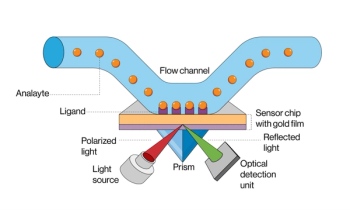Key Points
- Iron (Fe) oxide absorption bands, especially 526–544 nm, govern Danxia’s red coloration.
- Powdered samples shift color toward yellow due to hematite dilution and increased lightness.
- CIE-LCh color space excels in precise, statistical color analysis over the Munsell system.
- Combining Munsell and CIE systems offers practical benefits for geological fieldwork.
Spectroscopy Reveals Secrets of Danxia’s Vivid Red Hues
In a new study published in Scientific Reports, researchers from Sun Yat-sen University and the Key Laboratory of Geological Processes and Mineral Resources Exploration in China have provided the most detailed analysis yet of the vibrant coloration of the Danxia red beds. Using visible diffuse reflectance spectroscopy (DRS), they identified how iron oxide minerals like hematite and goethite create the breathtaking reds and yellows that define these iconic geological formations (1).
The study was conducted by Wang He, Zhijun Yang, and Hongwei Li, and marks a significant advancement in understanding the mineralogical basis of one of China’s most scenic and scientifically valuable landforms (1).
A Quantitative Look at Color
Danxia landforms, named after the Danxia Basin, where they were first described, are known for their rich red sedimentary rocks and beautiful landscape (1). Until now, their striking colors were mostly documented qualitatively. This study sought to quantify those colors using both the Commission Internationale de l'Éclairage (CIE) color space, a precise, standardized system developed in 1931, and the Munsell color system, which is widely used for its intuitive visual classification of hues, chroma (color intensity), and lightness (1).
Researchers collected three types of rock samples from the Danxia Basin. Some were analyzed in situ using a portable spectroradiometer, others were drilled and examined in the lab, and a third set was powdered to assess how granularity affects light reflection and color appearance (1).
Spectroscopy Meets Mineralogy
The heart of the study lies in its spectroscopic analysis of iron oxides. By transforming the diffuse reflectance spectra using the second derivative of the Kubelka–Munk function and continuum removal techniques, the team was able to isolate absorption bands linked to different iron oxide transitions in the visible light spectrum (1).
Three absorption bands emerged prominently. Of these, the electronic polarization transition (EPT) band was the most significant in determining color. Found between 526 and 544 nm, it is especially linked to hematite, the dominant Fe oxide in the red beds. Goethite, a minor component, also contributed to absorption bands, particularly around 421 nm. This spectral fingerprinting not only confirmed the mineral composition but also directly linked specific features in the reflectance spectrum to visible color properties (1).
Shifting Hues: The Role of Powdering and Particle Size
The researchers also found that powdered samples exhibited a noticeable shift in hue, from the red (6.5R to 9YR) in intact samples toward yellow (2.5YR to 0.1Y) in powders. This transformation, attributed to reduced absorption and increased light scattering, is consistent with predictions from Kubelka-Munk theory. Powdering diluted the hematite content with non-colored minerals, resulting in brighter, more chromatic yellows due to enhanced reflectance of longer wavelengths (1).
Measuring and Mapping Color
Using CIE XYZ and its transformations to CIE-LCh and CIE-Yxy, the researchers mapped out precise color coordinates. The CIE-LCh space—favoring Euclidean distance for color metrics, proved superior in capturing subtle variations (1–2). However, the Munsell system remained useful for intuitive, field-based classification. The study recommends combining both systems for practical geological and environmental work (1–2).
Key Findings and Implications
The research also revealed statistically significant correlations: Hue showed a negative correlation with the EPT(Hem) band and specific reflectance ratios. Chroma was positively correlated with cumulative spectral area and reflectance amplitude, making these ideal indicators of saturation. The results have broad implications for geologists, environmental scientists, and land use planners seeking to understand or preserve Danxia sites (1).
By integrating advanced spectroscopic techniques with traditional color systems, this research not only demystifies the chromatic beauty of the Danxia red beds but also sets a new standard for mineral color analysis in sedimentary geology.
References
(1) He, W.; Yang, Z.; Li, H. Identifying the Color and Absorption Band Properties of Fe Oxides in Danxia Red Beds by the Visible Diffuse Reflectance Spectrum. Sci. Rep. 2025, 15, 4217. DOI: 10.1038/s41598-025-87913-9
(2) Zhihui, Y.; Xinshuo, L.; Sujun, W.; Limei, Y.; Honglin, Y. Quantitative Study on the Color of Mineral Materials Based on CIELAB and Munsell Systems. In 2024 21st International Computer Conference on Wavelet Active Media Technology and Information Processing (ICCWAMTIP); IEEE: New York, 2024; pp 1–4. DOI: 10.1109/ICCWAMTIP64812.2024.10873698





